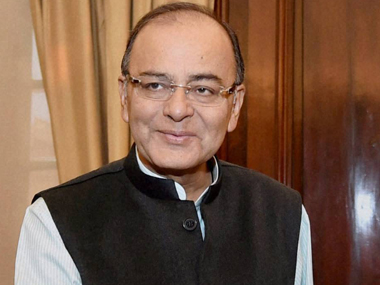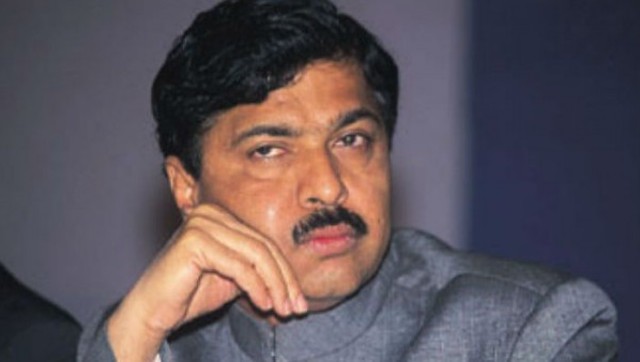Bit by bit, the NDA government’s growth revival strategy for 2015-16 is becoming clearer. The three key elements in this strategy are more public investment, an easing of the fiscal roadmap next year, and higher revenues from oil, spectrum and disinvestment.
By one reckoning, the government will probably have a war-chest ranging anywhere from Rs 1,00,000 crore to Rs 1,50,000 crore in terms of additional budgetary resources to invest in infrastructure next year, giving a massive booster dose for a comatose Indian economy. (We explain how we got to this figure in detail below). In fact, the additional resources will be large enough to stimulate both public investment and offer a slew of tax concessions to individuals and corporates, which will revive animal spirits in the economy.
The first indication of a shift from the P Chidambaram-formulated UPA-nomics, which is the prime cause of the current slowdown, came with the Mid-Year Economic Analysis of the finance ministry in December, which called for a step-up in public investment, not to crowd out the private sector, but to prime the pump for its revival.
The analysis, overseen by Chief Economic Advisor Arvind Subramanian, diagnosed India’s growth problem as one of excessive private sector debt which was constraining its ability to invest. This called for public investments to take up the slack. The analysis said: “India has been afflicted by what might be characterised as the ‘balance-sheet syndrome with Indian characteristics.’ Like Japan after the real estate and equity boom of the late 1980s, and like the US after the global financial crisis, balance-sheets are over-extended. The Indian case resembles Japan more than the US since it is firms’ balance-sheets (and not those of consumers) that are over-extended, exerting a drag on future investment/spending….In this context, it seems imperative to consider the case for reviving public investment as one of the key engines of growth going forward, not to replace private investment but to revive and complement it.”
This strategy is slowly being rolled out. Friday’s newspapers, for example, spell out how this increase in public investment will be financed. The Indian Express says that the fiscal deficit targets in the next few years may be eased (or left unstated) till growth revives. Under the Fiscal Responsibility and Budget Management Act left behind by Chidambaram, the government has to keep cutting the fiscal deficit by 0.3 percent annually and the revenue deficit by 0.5 percent. Finance Minister Arun Jaitley is essentially tearing up Chidambaram’s roadmap, and having them redrawn.
If the fiscal deficit target for 2015-16 is cut only marginally, to say 4 percent, this will give the government nearly Rs 30,000 crore of additional resources if the economy grows at 6 percent next year, and inflation is around 4 percent on an average. If inflation is higher, the resources available will be higher as the nominal GDP will rise with inflation.
Yesterday (1 January), another prong of the strategy became apparent, when the government announced its third increase in excise duties of Rs 2 a litre on unbranded petrol and diesel since October 2014, when global oil prices started tumbling. Business Standard notes that similar increases have been announced for branded fuels as well, enabling the government to rake in around Rs 54,000-58,000 crore in a fully year from the three hikes. This year’s take will be around Rs 16,000-17,000 crore till 31 March 2015.
Next year, Jaitley will have an additional Rs 54,000 crore in the kitty from extra petroleum excise.
While the excise hikes will help the finance minister plug some of the shortfalls in indirect tax revenues this year to meet his 4.1 percent fiscal deficit target, the additional revenues next year will be used to start a massive road-building programme to kickstart growth.
But it is not only road-building that will get the benefit of public investment. Railway Minister Suresh Prabhu is also planning an unconventional boost to railway investments by generating more non-tariff revenues. This does not rule out a marginal increase in fares or freight, but he is looking for non-tariff areas, with a committee already suggesting some ideas for a start.
The committee, headed by former finance secretary DK Mittal, has apparently recommended a plan where corporate houses can brand trains and railway stations for a fee. Thus, suggests The Economic Times , we could have an Amul Shatabdi Express or a Flipkart Chandigarh Station.
When fully rolled out, this scheme alone is expected to generate Rs 8,000 crore of annual revenues. A conservative estimate for the first year of its implementation could be around Rs 3,000 crore.
The other key prongs in the drive to beef up investments in infrastructure are more revenues from spectrum and disinvestment – and leaving banks to finance their capital needs by tapping the market.
Under a decision taken by the Modi government last month (December 2014), public sector banks will be asked to raise nearly Rs 1,60,000 crore by diluting the government’s stake to 52 percent by 2019. While this may not be enough for all banks to raise enough capital to meet Basel III norms, it will ensure that at least for the next two years, the government will not have to provide much equity through budget allocations. For 2015-16, the government will save at least Rs 10,000 crore in bank capitalisation costs – Rs 11,000 crore being this year’s allocation.
Bank recapitalisation is vital because banks have to both finance the additional spending (fiscal deficits are largely financed by banks) by government and the private sector’s investments.
The Telecom Regulatory Authority of India has proposed a 22 percent cut in the base price for pan-India 3G spectrum in order to encourage more aggressive bidding by the telcos. It is also likely to offer more spectrum his time, so that there is no excess bidding. The Economic Times estimates that the government could get around Rs 1.2 lakh crore from the auctions, a third of it this year itself, if the auctions succeed in generating enough enthusiasm among telcos. In 2015-16, the money could be similar, but let’s assume a conservative Rs 20,000 crore of additional spectrum revenues.
As for disinvestment, if the ONGC and Coal India sales go through – by hook or by crook, including the usual LIC/public sector last-minute bailouts - another Rs 50,000-58,000 crore could come in this year. Next year, the numbers could be similar. The additional resources can come in from the sale of SUUTI’s stake in L&T, ITC and Axis Bank, which may be worth around Rs 50,000 crore, and the sale of the balance government holdings in Balco and Hindustan Zinc. Which could bring in an additional Rs 20,000 crore. That’s Rs 70,000 crore of additional resources over and above normal public sector disinvestment. A conservative estimate will be half that, at Rs 35,000 crore.
Taken together, the war-chest for public investment will add up to more than Rs 1,00,000 crore – with this writer’s calculations yielding Rs 1,42,000 crore. Add the Rs 10,000 crore savings from not having to capitalise banks next year, and the figure could cross Rs 1,50,000 crore.
Only two things can ruin this scenario: a sudden spike in oil prices, which will dent oil revenues; or a serious drought.
On current reckoning, both seem unlikely.


)




)
)
)
)
)
)
)
)